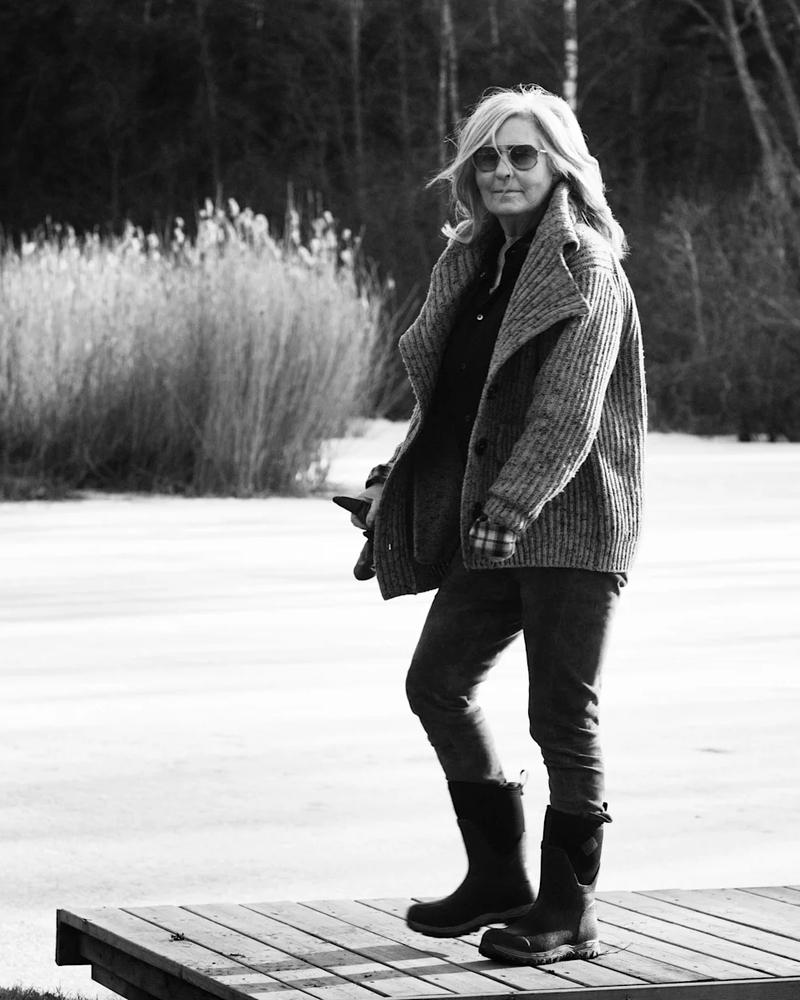Denise Grünstein
Denise Grünstein was one of Sweden’s most celebrated photographers. Her initial professional scope encompassed commercial photography in fashion and interior design, as well as still photography for the film industry. This diversity gave Grünstein the freedom to experiment with the different forms of photographic expression that she later applied throughout her career. She, famously, developed an experimental style, with autobiographical content, that brought her into close contact with contemporary art movements. Critics and art historians alike have often pointed out how her images are easily recognizable for their characteristic, intensely present and highly personal (often also quite romantic) artistic expression. Considered one of Sweden’s foremost portrayers of people (immortalising numerous models, actors, dancers, directors, authors etc.), she had a unique ability to imprint her own feelings and temperament on camera. Recurring themes, in her art photography projects, were beauty, horror and the borders between fantasy and reality. One can often see references to art history in her photography, which was influenced, and inspired, by nature, painting and sculpture.
Born in Helsinki, into an artistic and literate family, she moved to Stockholm as a child and would live and work in Sweden until her, untimely, death in 2023. Grünstein studied photography at Beckman’s College of Design, but never received formal academic training in photography like many of her contemporaries. Instead, she learned photography through hands-on experience. Her approach to photography also broke with the accepted stylistic ideals, and distanced itself from the over-explicit political photographic ideology of its time.
After studying in the United States, in the mid 1970s, and working in Stockholm, her interest in images led to occasional employment with the Swedish Film Industry as a still photographer on a variety of shoots or sets. One of many films that Grünstein worked on was Lasse Hallström’s (born 1946, Swedish film director and the man behind most of pop group ABBA’s music videos before earning international recognition for feature films like My Life as a Dog [1985], for which he was nominated for an Academy Award for Best Director, What’s Eating Gilbert Grape [1993], The Cider House Rules [1999] and Chocolat [2000])Mitt liv som hund (My Life as a Dog), 1985.Other projects, at the time, included work as stage manager with fashion and commercial photographers, as well as being responsible for the costumes in various films (worth mentioning here is her work with still photography as well as costumes in Swedish cult classic Sällskapsresan eller Finns det svenskt kaffe på grisfesten from 1980).
Early experiences as an assistant on commercial photo shoots enabled her to move quickly towards a career as a freelance photographer, working in the fields of fashion and portraiture, in the years before she came to prominence at the end of the 1970s. Portraits of colourful and famous people soon became Grünstein’s speciality and her images were a strong feature in publications such as the legendary Swedish magazine Månadsjournalen and Elle. These weren’t just ordinary looking pictures; Grünstein managed to get something more out of the people she photographed - choice of location, skilful direction and thorough post-processing created a high artistic standard.
A common feature of these portraits is that the prominent models are never portrayed in their professional capacities. This in turn required the portraits to be arranged, a method originating in the world of advertising. This is exemplified by the portrait of Inga-Britt Ahlenius (born 1939, Swedish auditor, public servant and former Under-Secretary-General for the United Nations Office of Internal Oversight Services, OIOS) made in 2008, as a commission for the Swedish National Portrait Collection. No one seeing the model, artfully draped in a patterned robe, posing in a wild summer landscape on Lidingö, Sweden, would be able to figure out that this was the head of the UN’s internal audit.
Grünstein sought out the classical ideals of photography. At first she made use of simpler cameras in order to be able to record her impressions rapidly. Later she experimented with large-format cameras and cut film of various sizes. In her work for magazines and other publications colour photography became dominant while in her exhibitions she favoured black and white material. By the turn of the millennium, Grünstein had developed her own independent art practice, using photography as an instrument. Her visual art became increasingly personal and narrative. She created her own worlds, large and small, often with an unfathomable mystery, almost like a frozen dream. There is always a clear aesthetic and a certain amount of romanticism.
Denise Grünstein exhibited in many different contexts, in galleries as well as museums. The most memorable and acclaimed solo exhibitions include Figure in Landscape (her first solo exhibition) at Moderna Museet, Stockholm (2001); Figure out at Kiasma, Helsinki (2010); En face at Nationalmuseum (during the museum’s temporary tenure at the Royal Academy of Fine Arts), Stockholm (2015); Casting at CFHILL, Stockholm (2018), Denise Grünstein ‘Nymphaeas’ at CFHILL, Stockholm (2021) and Denise Grünstein ‘Minnen i svartvitt’ at CFHILL, Stockholm (2023).
Grünstein’s work can be found in the collections of Nationalmuseum, Stockholm; Moderna Museet, Stockholm; Kiasma, Helsinki; Hasselblad Center, Gothenburg, Sweden; Artipelag, Stockholm and Museet for Samtidskunst, Oslo.
Denise Grünstein, sadly, passed away after an extended period of illness, on 23 June 2023.
Copyright Firestorm Foundation
